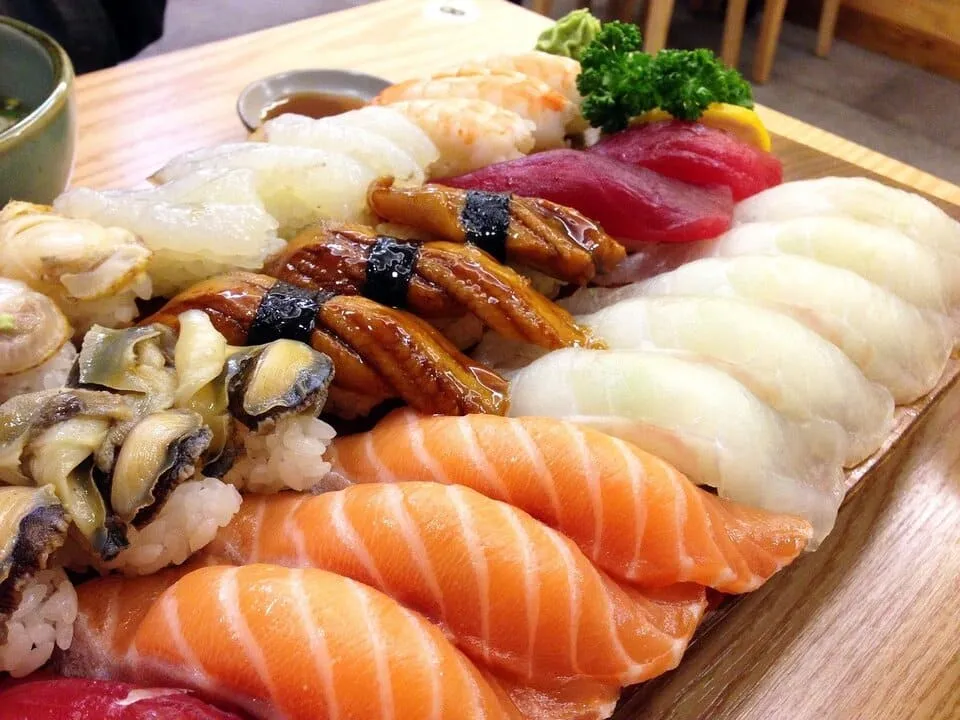Mar 15, 2024, 00:00
Our deliverables are so created that they are more than designs
The fish was fermented with rice vinegar, salt, and rice, after which the rice was discarded. Narezushi is also called honnare
A dish known as narezushi (馴れ寿司, 熟寿司, 'matured fish'), stored in fermented rice for possibly months at a time, has been cited as one of the early influences for the Japanese practice of applying rice on raw fish. The fish was fermented with rice vinegar, salt, and rice, after which the rice was discarded. Narezushi is also called honnare, meaning 'fully fermented,' as opposed to namanare, meaning 'partially fermented', a type of sushi that appeared in the Muromachi period. Fermented fish using rice, such as Narezushi, originated in Southeast Asia where it was made to preserve freshwater fish, possibly in the Mekong River basin, which is now Laos, Cambodia, and Thailand, and in the Irrawaddy River basin, which is now Myanmar. The first mention of a narezushi-like food is in a Chinese dictionary thought to be from the 4th Century, in this instance referring to salted fish that had been placed in cooked or steamed rice, which caused it to undergo a fermentation process via lactic acid. Fermentation methods following similar logic in other Asian rice cultures include burong isda, balao-balao, and tinapayan of the Philippines; pekasam of Indonesia and Malaysia, pla ra of Thailand; and sikhae (식해) of Korea. The lacto-fermentation of the rice prevents the fish from spoiling. When wet-field rice cultivation was introduced during the Yayoi period, lakes and rivers would flood during the rainy season, and fish would get caught in the rice paddy fields. Pickling was a way to preserve the excess fish and guarantee food for the following months, and narezushi became an important source of protein for Japanese consumers. The term sushi literally means 'sour-tasting', as the overall dish has a sour and umami or savory taste. The term comes from an antiquated し shi terminal-form conjugation, no longer used in other contexts, of the adjectival verb sui (酸い, 'to be sour'), resulting in the term sushi (酸し).Narezushi still exists as a regional specialty, notably as funa-zushi from Shiga Prefecture. In the Yōrō Code (養老律令, Yōrō-ritsuryō) of 718, the characters for '鮨' and '鮓' are written as a tribute to the Japanese imperial court, and although there are various theories as to what exactly this food was, it is possible that it referred to narezushi. Until the early 19th century sushi slowly changed and the Japanese cuisine changed as well. The Japanese started eating three meals a day, rice was boiled instead of steamed, and of large importance was the development of rice vinegar.
During the Muromachi period (1336–1573), the Japanese invented a style of sushi called namanare or namanari (生成、なまなれ、なまなり), which means 'partially fermented'. The fermentation period of namanare was shorter than that of the earlier narezushi, and the rice used for fermentation was also eaten with the fish. In other words, with the invention of namanare, sushi changed from a preserved fish food to a food where fish and rice are eaten together. After the appearance of namanare, sake and sake lees were used to shorten fermentation, and vinegar was used in the Edo period. In 1958, Yoshiaki Shiraishi opened the first conveyor belt sushi restaurant (回転寿司, kaiten-zushi) named 'Genroku Zushi' in Higashi-Osaka. In conveyor belt sushi restaurants, conveyor belts installed along tables and counters in the restaurant transport plates of sushi to customers. Generally, the bill is based on the number of plates, with different colored plates representing the price of the sushi. When Genroku Sushi opened a restaurant at the Japan World Exposition, Osaka, 1970, it won an award at the expo, and conveyor belt sushi restaurants became known throughout Japan. In 1973, an automatic tea dispenser was developed, which is now used in conveyor belt sushi restaurants today. When the patent for conveyor belt sushi restaurants expired, a chain of conveyor belt sushi restaurants was established, spreading conveyor belt sushi throughout Japan and further popularizing and lowering the price of sushi. By 2021, the conveyor belt sushi market had grown to 700 billion yen and spread outside Japan.
